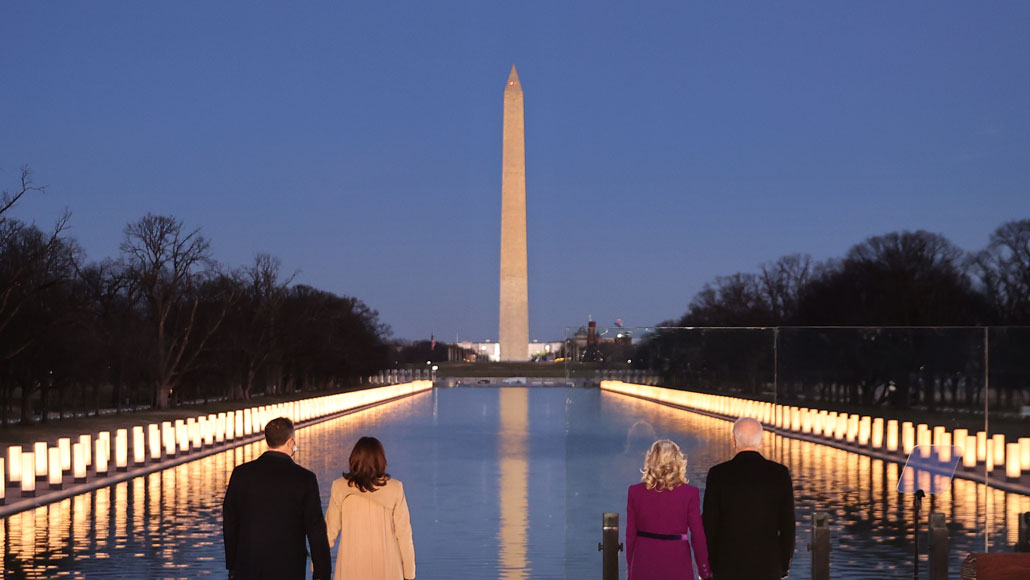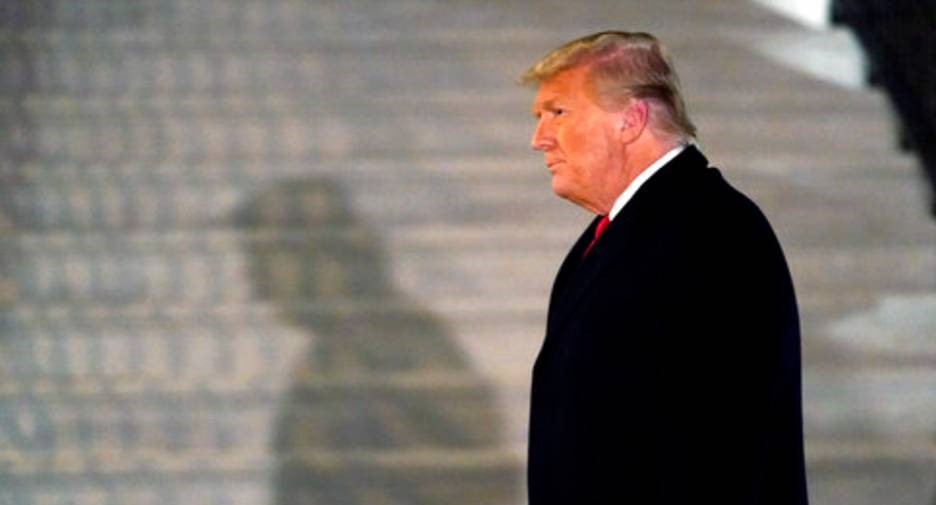
Lamps lit along the Lincoln Memorial Reflecting Pool in Washington, D.C., on January 19, the eve of President Joe Biden’s inauguration, honored the 400,000 Americans who have died from COVID-19. “To heal, we must remember,” said Biden, seen here with Vice President Kamala Harris and their spouses.
Inauguration Day marks both a grim milestone in the coronavirus pandemic and a new chapter in the U.S. response to it.
On January 19, the United States surpassed 400,000 coronavirus deaths. A day later, newly sworn-in President Joe Biden was poised to launch an ambitious plan to tackle the public health crisis, including distributing 100 million vaccine shots in his first 100 days, issuing a “100 Days Masking Challenge” to encourage the public to wear masks and requiring people to keep physically distant and wear masks in federal buildings and on federal lands.
The President also intends to ask Congress to spend $400 billion to kick-start his national COVID-19 response. The plan includes:
- $20 billion for a national vaccine program that would partner with states, localities and tribal nations to fast-track vaccine rollout. The plan calls for more vaccination sites, including mobile centers, and expanded efforts to reach underserved communities. The National Guard will also be made available to states to assist with the effort;
- $50 billion to expand testing, including bolstering support for laboratories and purchasing rapid antigen tests;
- Funding 100,000 public health workers to aid in contact tracing, vaccine distribution or other needs of local health departments;
- Expanding paid leave programs to allow more workers to stay home if sick.
Exactly how much money goes toward these, and other, efforts depends in part on Congress, and the details will likely change in the coming weeks. Science News talked with Michael Osterholm, an epidemiologist at the University of Minnesota in Minneapolis and an adviser to the Biden transition team’s COVID-19 advisory board, about the new administration’s plans to handle the pandemic. This interview has been edited for brevity and clarity.

